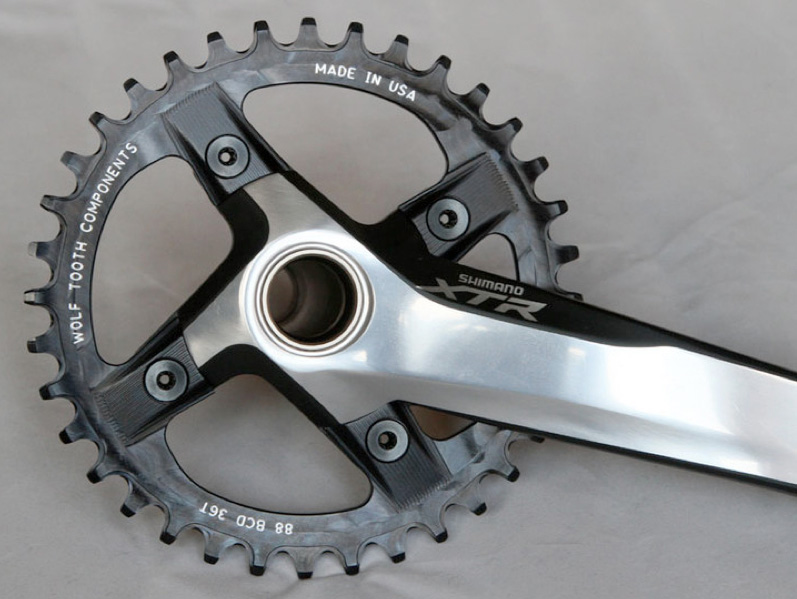It must be said: Most mountain bikes have too many gears. The default configuration of three front chainrings and a cassette of cog options on back — usually 27 gears in all — is overkill.
New products offer fewer gears. Indeed, a macro trend among the big companies (SRAM and Shimano) is eliminating chainrings to lessen the number of gears and shifts a rider can perform. Two chainrings (instead of three) is becoming a standard, especially with racers.


But what about dropping to only one ring up front? I did it this summer. I dropped a front shifter and a derailleur in the process, too, and my bike is lighter and (arguably) faster as a result.
The killer app was a chainring made by parts brand boutique Wolf Tooth Components. The company’s namesake Wolf Tooth chainring converts your bike to a rig with a single front ring.
A bonus: The Wolf Tooth does not require a chain keeper or guard. Its precisely-milled teeth link so solidly with a chain that it simply “sticks” in place as you ride with no trouble.
I’ve been testing it for a month. There are some advantages — lighter weight, less cost, less fuss when riding — as well as some disadvantages to the setup. My gearing has a 36-tooth ring with a 10-speed (12 × 36) cassette on back.

Weight loss was a top motivator for me. My mountain bike weighed 20 lbs, 7 oz. at the start of the summer. After the conversion, during which the bike lost the derailleur, shifter, and two rings, it was down to 19 lbs, 11 oz.
That loss of 12 oz. (an even 3/4 pound) might sound small. But for $75 it’s a bargain in the world of “weight weenie” upgrades, where adding lighter carbon or titanium or higher-end parts is always a pricey choice.
(Weight freaks consider $1 per gram a fair price to pay, and 12 ounces is 340 grams.)
Another positive: Simpler gearing, I believe, can also be better for riding. This is because you focus on the trail ahead and your ability, not so much the “optimal gear” for the moment at hand.
In my scenario, riding just became somewhat simpler. Only one hand shifts. And there’s no distraction of hopping up or down between giant and mini rings on front.

Finally, the money part makes sense for anyone looking at the widely popular new SRAM 1X11 setup. This upgrade — which includes replacing all the major components in your drivetrain — costs about $1,200.
Admittedly, the XX1 setup gets you a 42 tooth cog in back, which is awesome. On an unlimited budget the XX1 would be my choice. But when it’s $1,200 (SRAM) versus $75 (Wolf Tooth), my choice was easy.
So, how does the Wolf Tooth system work? Look at a bike chain. The links overlap each other, creating alternating wide and narrow spaces between the links. Wolf Tooth mills its rings with alternating wide/narrow teeth that fit into those spaces in the chain like a glove, intermeshing around each chain pin and link such that the teeth hold the chain better than a traditional ring, which uses teeth that are all narrow.
Wolf Tooth recommends the use of a clutched derailleur on bumpy terrain. I rode our upgraded mountain bike with a clutched derailleur and our cross bike without one.
The result? No dropped chains, no broken chains, no mis-shifts, no jams.
continued on next page. . .






